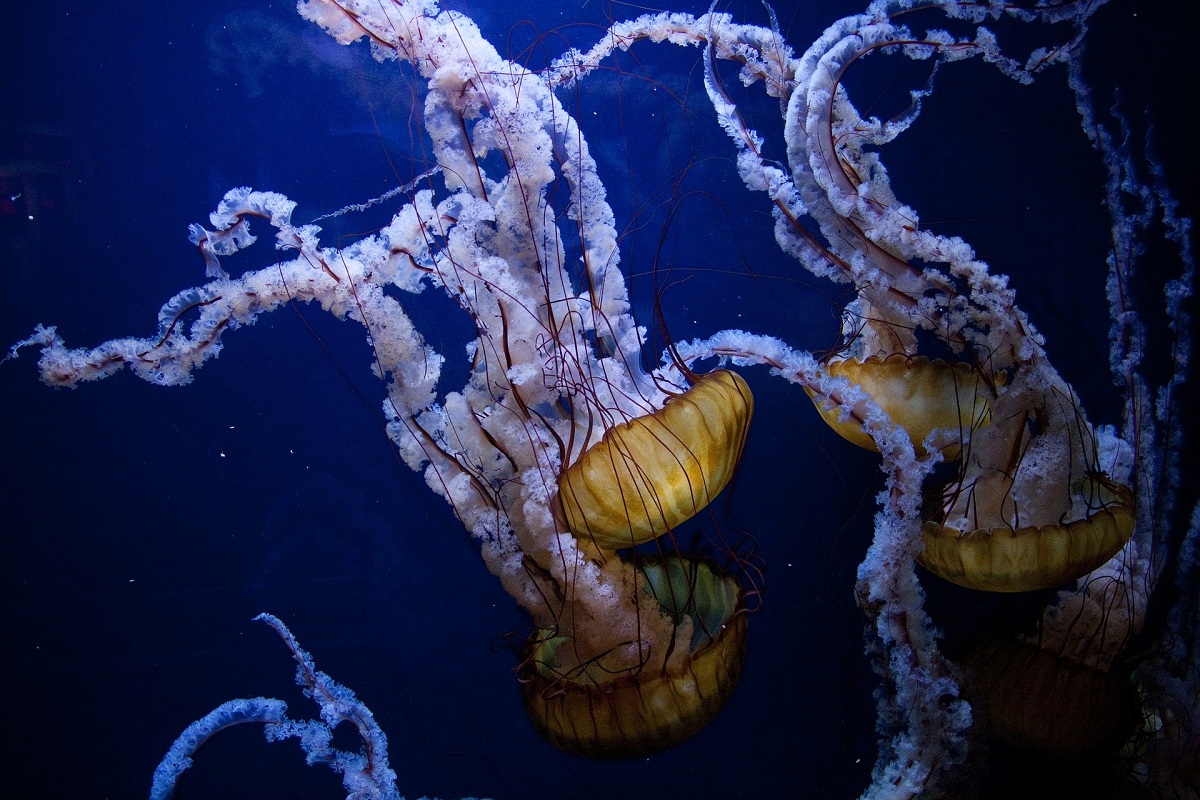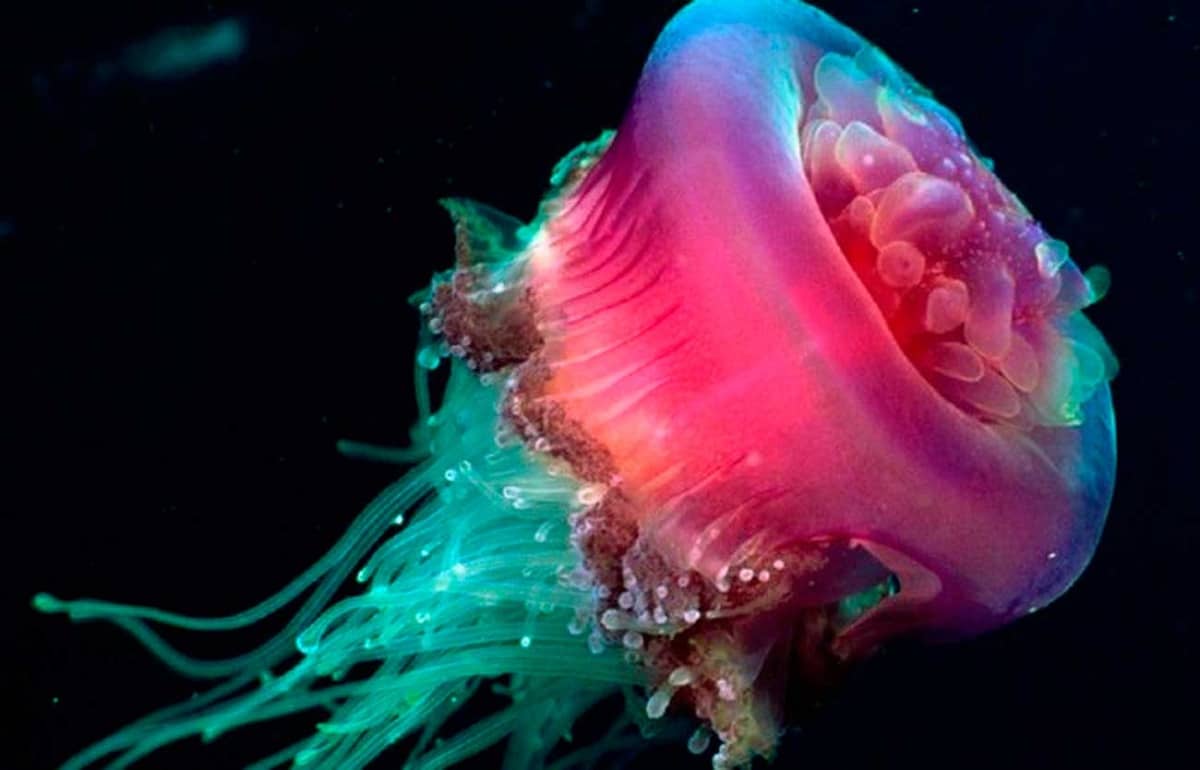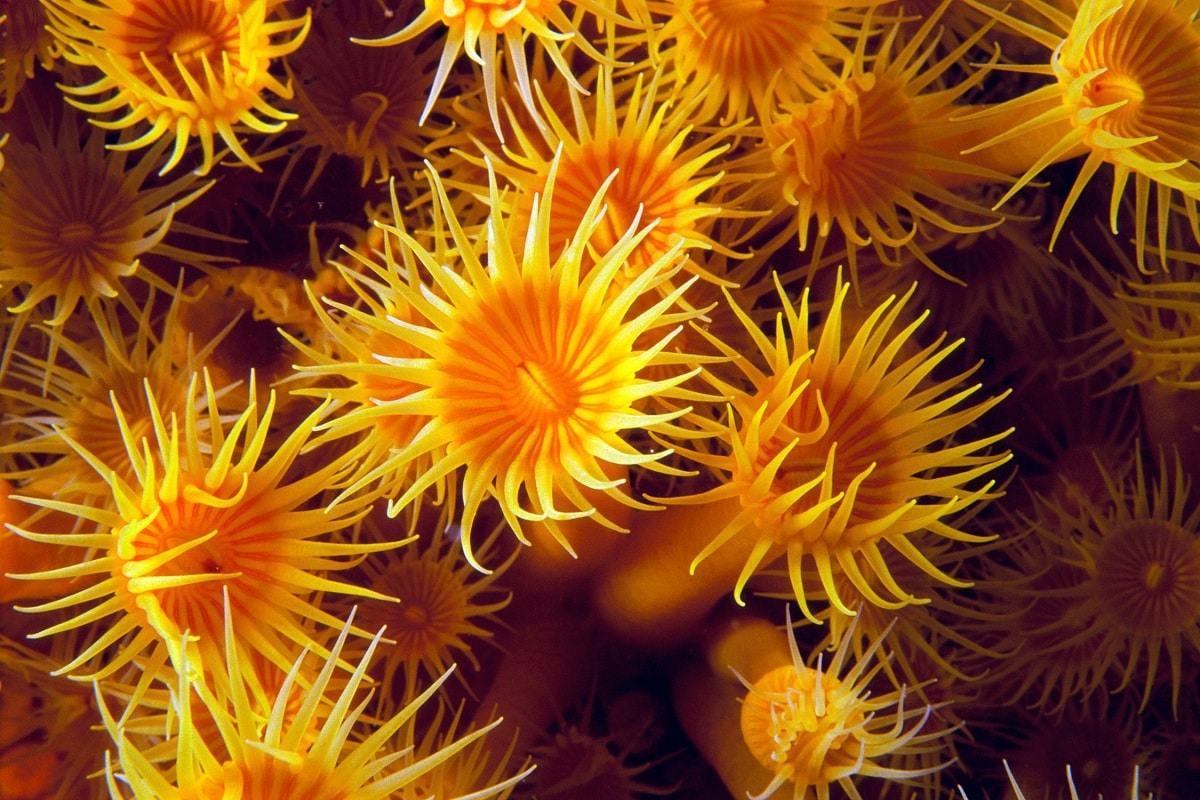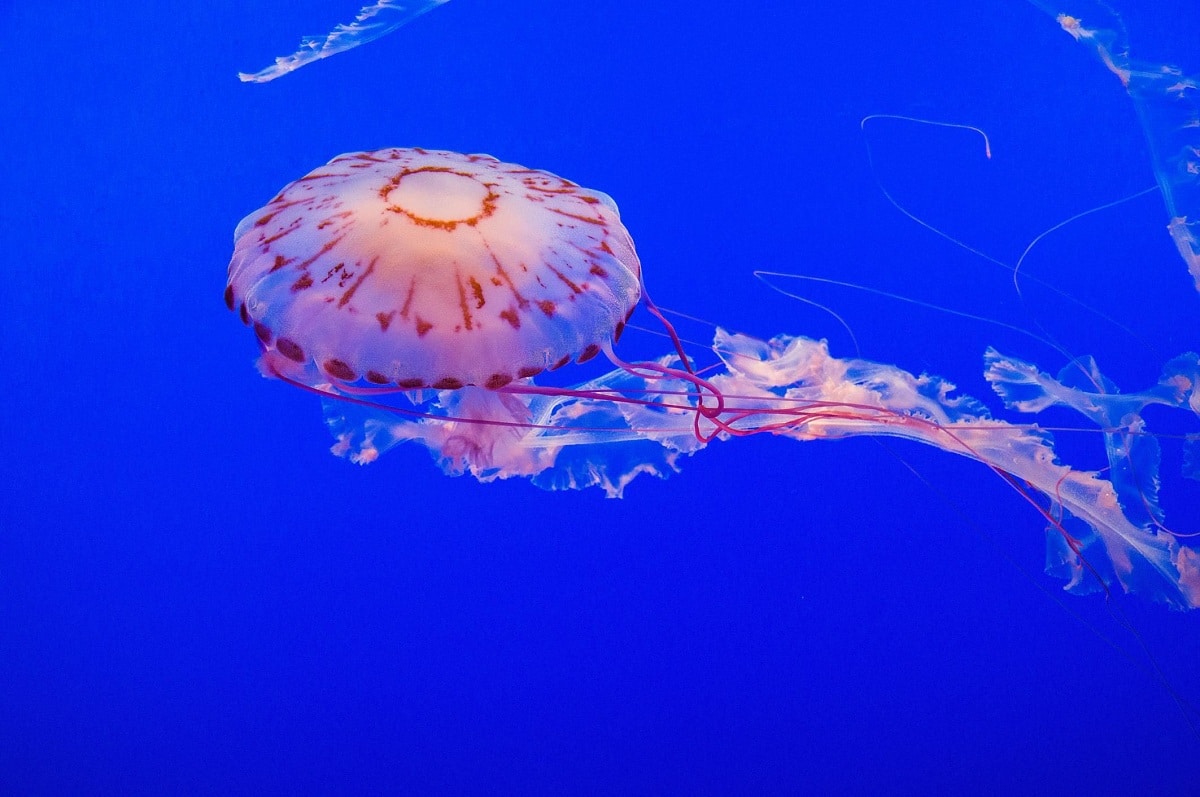
Among the most primitive living beings that we find at the bottom of the oceans we have the cnidarians. It is a phylum that is composed of aquatic organisms and its name comes from its own characteristic cells. They are called cnidocytes and it is what makes these species special. Currently around 11.000 species of cnidarians are known that are divided into different classes, genera and species.
In this article we are going to tell you about all the characteristics, habitat and main species of the cnidarians.
Main characteristics of cnidarians

Among all the species that make up this group of animals we find corals, jellyfish, anemones and colonies. Of the cnidarians we find the main jellyfish from all over the world. These are marine species that have been able to colonize freshwater environments. They are usually benthic and sessile which meant they have restricted movement. Others of them are smaller in size and are considered planktonic. The size of these animals vary from microscopic sizes to others of greater than 20 meters that include tentacles.
These are organisms that have radial symmetry and are diblastic. This means that they develop from various embryonic leaves known as ectoderm and endoderm. What stands out most of the cnidarians is the stinging cell for which they receive this name. It's about the cnidocytes. Its radial symmetry means that some groups can also be modify to biradial, tetraradial or some other type of symmetry. Cnidocytes are cells capable of shooting and poisoning their prey. They use it both to hunt and to defend themselves from possible predators.
They have a level of tissue organization since they do not have organs. The digestive system is a sac-shaped cavity with a single entrance hole for food and an exit for material that has not been digested. The tentacles come in a number ranging in multiples of 6 or 8. Being very primitive organisms they do not present cephalization. The main body patterns that we find within this phylum of animals are: polyp and jellyfish.
The first thing we must know between the difference between polyp and jellyfish is their mobility. While the polyp is sessile and has a cylindrical shape, the jellyfish is completely mobile and has a bell shape. The polyp must be attached to the terrestrial ocean floor continuously and have its tentacles directed upwards. On the contrary, the jellyfish has the tentacles and the mouth directed downwards.
Classification of cnidarians

Many species of cnidarians produce colonies that are made up of individual organisms known as zooids that are both jellyfish and polyp-like and both. Among the main species with which cnidarians are classified we have some that are able to reproduce asexually through polyps and others sexually through jellyfish. Some of the species can progress from polyp to jellyfish stages several times throughout their life cycle. Others only present in the polyp phase or the jellyfish phase.
Let's see what the main classes of cnidarians are:
anthozoa
This class includes all the animals known by the name of anemones, corals and sea feathers. This class only features animals that have the polyp stage. They can be both lonely and colonial. The polyp can reproduce asexually or sexually and generate new polyps. These animals are completely sessile and must remain permanently alerted to the substrate. The tentacles that occur in these animals are found in multiples of 6. Its gastrovascular quality is divided by partitions that originate the gastrodermis and mesoglea area. The mesoglea is the intermediate zone between the two embryonic cells known as ectoderm and endoderm.
cubozoa
It is a class within the cnidarians that includes all box jellyfish and sea wasps. These species only present in the jellyfish phase. It has a cubic shape and that's where its name comes from. The edge of these jellyfish is scalloped and its margin folds inward to form a veil-like structure. Thus, This structure for which the cubozoans stand out is called velario. These animals stand out for having a very toxic bite here, it can become lethal if it bites humans.
Hydrozoa
This group of animals is commonly unknown under the name hydromedusae. In most of these species there is an alternation in the generations between the asexual polyp phase and a sexual jellyfish phase. The polyp phase usually forms at from colonies of individuals that are polymorphic. This means that they have different shapes and they generate structural colonies of different types.
The jellyfish of this class have a veil like the previous ones and do not have cnidocytes in the quality of gastrovascular. Their gonads have an ectodermal origin and also do not have the gastrovascular quality divided by septa.
Scyphozoa
This group of animals they predominate for having mainly a jellyfish phase. Its polyp phase is very small. When it reaches the jellyfish phase, they do not have a veil but present clothing and cnidocytes in the gastrovascular cavity. Unlike the hydrozoa class, this class of cnidarians does have gastrovascular quality made up of 4 septa. Thanks to this separation, it has an interradial symmetry that separates the gastrovascular bag into 4 gastric bags.
Feeding and reproduction of cnidarians

One of the main characteristics that these animals have is that the vast majority of them are carnivores. To capture their prey they use the help tentacles and the cnidocytes that release the stinging substance and poison the prey.
Regarding its reproduction, it can reproduce asexually and sexually by different mechanisms. In some groups there is an alternation between a polyp phase of asexual reproduction and a jellyfish phase of sexual reproduction.
I hope that with this information you can learn more about cnidarians and the main classes and species that exist.